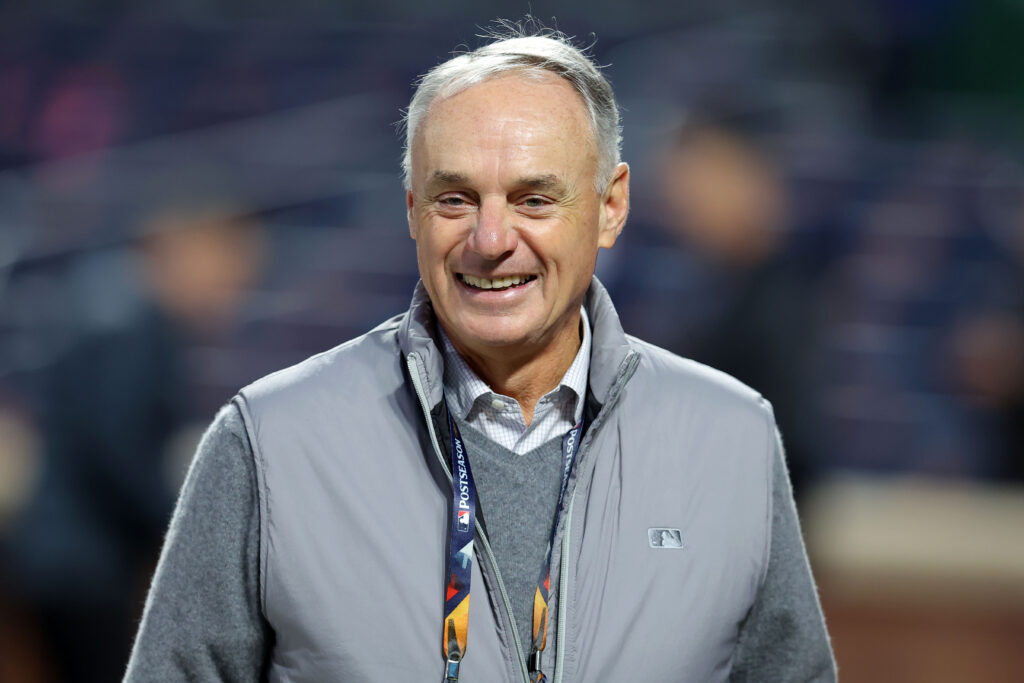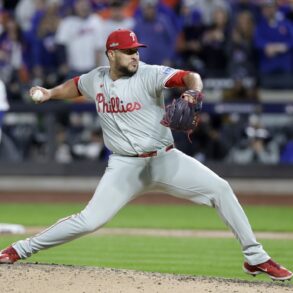
The past weekend seemed like something of a tipping point for fans of teams other than the Dodgers. The Dodgers were able to land Japanese phenom Roki Sasaki on Friday for a mere $6.5MM bonus, given the restrictions on signing international players under the age of 25. While Sasaki will enter the arbitration system for the final three years of team control from 2028-30, he still comes with incredible surplus value.
Then on Sunday, the Dodgers put an exclamation point on their weekend by signing the best reliever on the market, Tanner Scott, to the fifth-largest free agent contract ever at the position. And yes, there was significant deferred money in Scott’s contract, but that’s a poll topic for another day.
We’ll hear from Sasaki soon enough, but surely the Dodgers’ previous monstrous offseason signings of Shohei Ohtani and Yoshinobu Yamamoto helped lure him to Los Angeles. Since the 2023 season ended, the club has also added Teoscar Hernandez (twice), Blake Snell, Tyler Glasnow, and others, while brokering extensions for Glasnow, Will Smith, and trade pickup Tommy Edman.
It’s not easy to buy an MLB dynasty. Others have tried, but the sport hasn’t seen back-to-back World Series winners since the 1998-2000 Yankees accomplished a three-peat. Now, with a 12-team playoff format, that might be even harder for the Dodgers to pull off.
Most MLB teams don’t open their books to the public, so we don’t know how many clubs would be profitable at the $370MM payroll the Dodgers currently sport. It’s fair to assume small market clubs could not support that type of payroll, even though some of them receive in excess of $150MM between national revenues and revenue sharing each year.
Some might argue that because of the nature of the MLB playoffs, the sport is already in good shape in terms of parity. But because the Dodgers bring in so much revenue (particularly through their TV deal), they have advantages in acquiring players that many markets simply cannot match. Maybe the Dodgers can’t guarantee a string of championships, but they haven’t won fewer than 98 regular season games since 2018 (extrapolating the pandemic season). Their payroll is obviously part of their success.
The drumbeat from fans, at least on social media, seems to be getting louder for a salary cap. It’s hard to argue: if all 30 teams were capped at spending, say, $200MM on player payroll, the regular season playing field would be leveled significantly. There would be star free agents the Dodgers, Mets, and other big markets simply could not sign. The salary cap would be tied to league revenue, and would rise accordingly. I’m not convinced a salary cap (and floor) is the only way to improve parity, but it’s the most obvious one.
MLB owners have wanted a salary cap for a long time. You may recall that was the reason for the 1994 strike, which cost us the World Series that year. The players did not give in to that demand, though they did allow for the first luxury tax in subsequent years.
The thing about a salary cap is that it would almost certainly increase parity, but as the name states, it would also cap player earnings short of what the free market allows. The expectation is that a salary cap would reduce the total amount of money earned by players, although commissioner Rob Manfred might argue that point. That’s why MLB is not an unbiased source when they talk about how a salary cap is needed for competitive balance.
Baseball has always had the strongest union in sports, almost entirely because of one man: Marvin Miller. Miller essentially created the MLBPA in 1966. He ran it until 1982 and deserves credit for the advent of arbitration and free agency in MLB. He also rallied players to go on strike or endure lockouts to ensure they only made forward progress, and did not accept a salary cap or even a luxury tax.
While the MLBPA has ceded ground since Miller retired, the sport still does not have a salary cap. Baseball was able to avoid work stoppages since the ’94 strike, until owners locked out the players after the 2021 CBA expired in December. Though negotiations often seemed perilous, ultimately a new five-year agreement was reached in March of 2022 and no games were lost. The two sides seemed enough at odds that many observers wondered if we’ll simply now get a lockout every five years.
In the wake of the most recent CBA and given turmoil with television rights, MLB put together an “economic reform committee.” The current CBA expires on December 1st, 2026. It’s not hard to picture owners banding together for their strongest salary cap push since Bud Selig’s in ’94. Assuming the MLBPA has enough solidarity under Tony Clark and Bruce Meyer to match its legacy, it follows that players might not give in, and some or even all of the 2027 season could be cancelled.
That leaves me with two questions for tonight’s poll. (I apologize for my lack of clarity in the initial version of this poll: assume a salary cap comes with a floor).
And then the next question:
This post was originally published on this site be sure to check out more of their content.






